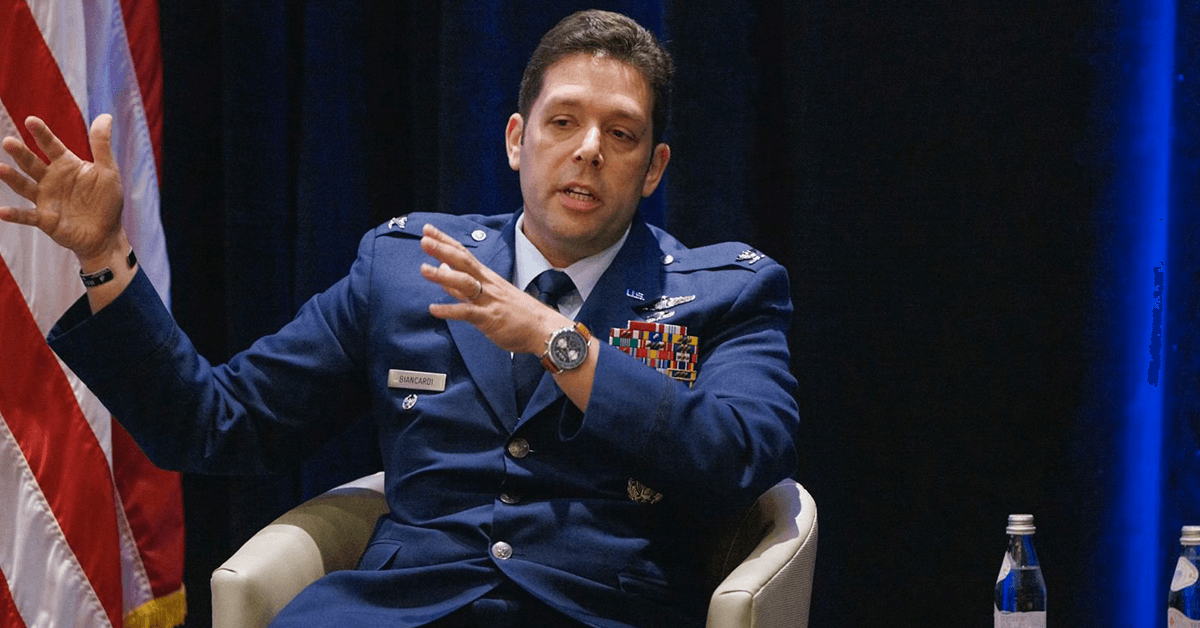Digital Air Force programs are implementing advanced information technology accelerators throughout the agency as the warfighting environment modernizes and technical capabilities become more critical in acquisition processes.
Accelerated IT implementations are evaluated on their impact on the Air Force’s digital infrastructure, and officials spoke on some of these findings during a panel discussion at the Potomac Officers Club’s 2024 Air Defense Summit.
Col. Frank Biancardi, deputy director of the Advanced Battle Management System Cross-Functional Team, said the Air Force has had a good portion of implementation of programs across the board, including a new zero trust strategy, which has helped the agency balance its “as-is fight tonight challenge” with where it would like to be regarding future capabilities.
“We’re trying really hard to look at all the capabilities from an analytical perspective and from an experimentation perspective, not just once we’ve acquired something in training and the evaluation side,” Biancardi said.
Col. James Crocker, the chief technology officer of the Department of the Air Force’s Cloud One, identity, credential and access management and data fabric enterprise cloud programs, said it has been essential for air fighters to be on the frontlines of this digital development.
“Getting the actual people who understand the battle space into developing the solution along with the users is one of the greatest things,” Crocker explained.
However, complex environments featuring quantum encryption and computing make it increasingly challenging to advance digital infrastructures while integrating human techniques.
Biancardi noted, “We need to move from better automation within software and hardware into human-machine teaming activities that are more complex, that may need AI or large language models.”
“So not just about the connections and having the information there, but the right information at the right time, to the right individual,” Biancardi added.
The Department of the Air Force has invested in enterprise capabilities, including Air Force Cloud One and the software tool known as the Secret and Below Releasable Environment, or SABRE, to serve as a benchmark for IT acceleration development.
Crocker also stressed the importance of informing people how the cloud system works rather than just delivering the capability.
“Educating the workforce on how to actually build workloads that operate effectively in the cloud is a major plus,” Crocker said. “That’s also a hurdle because, like I said earlier, it’s a cultural shift across the entire DAF.”
Don’t miss the Potomac Officers Club’s next summit: the 2024 Navy Summit! At the event on Aug. 15, experts in the field will come together to discuss the Navy’s most important challenges as environments and threats evolve. To learn more and register to attend, click here.




